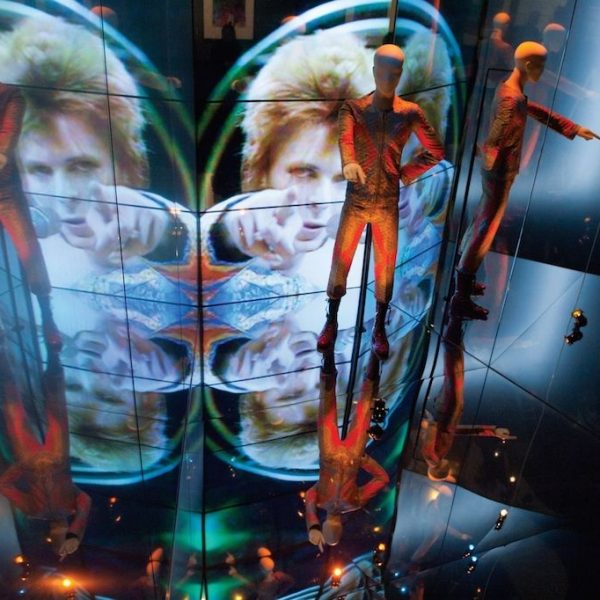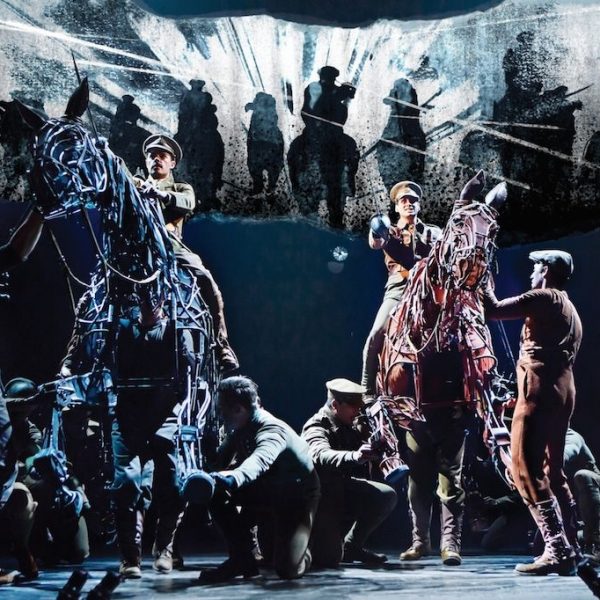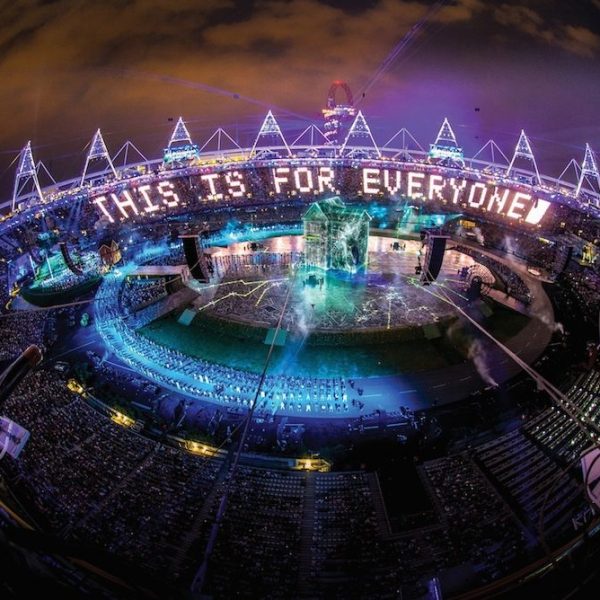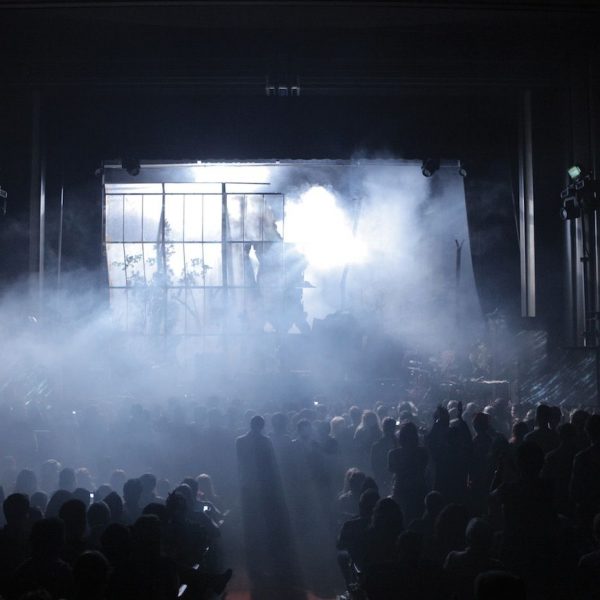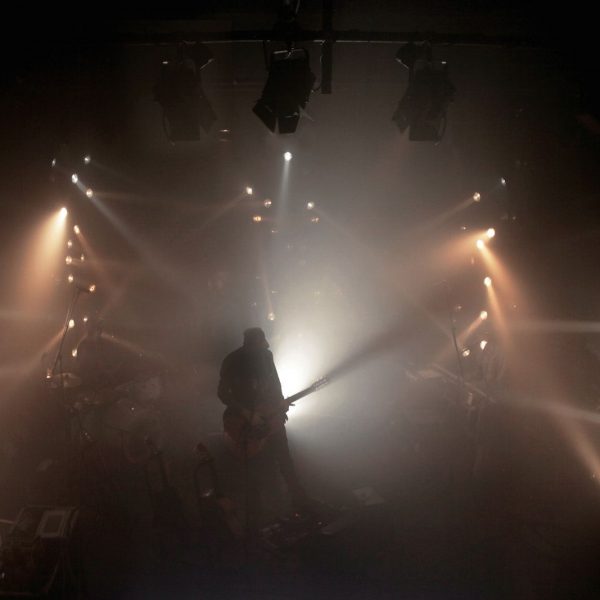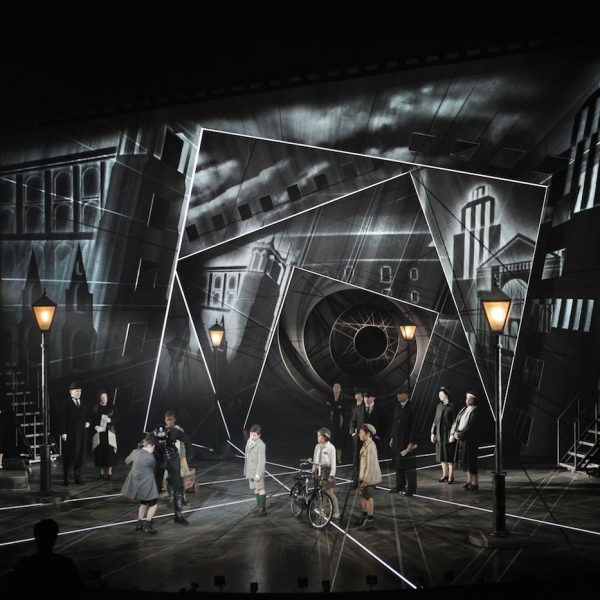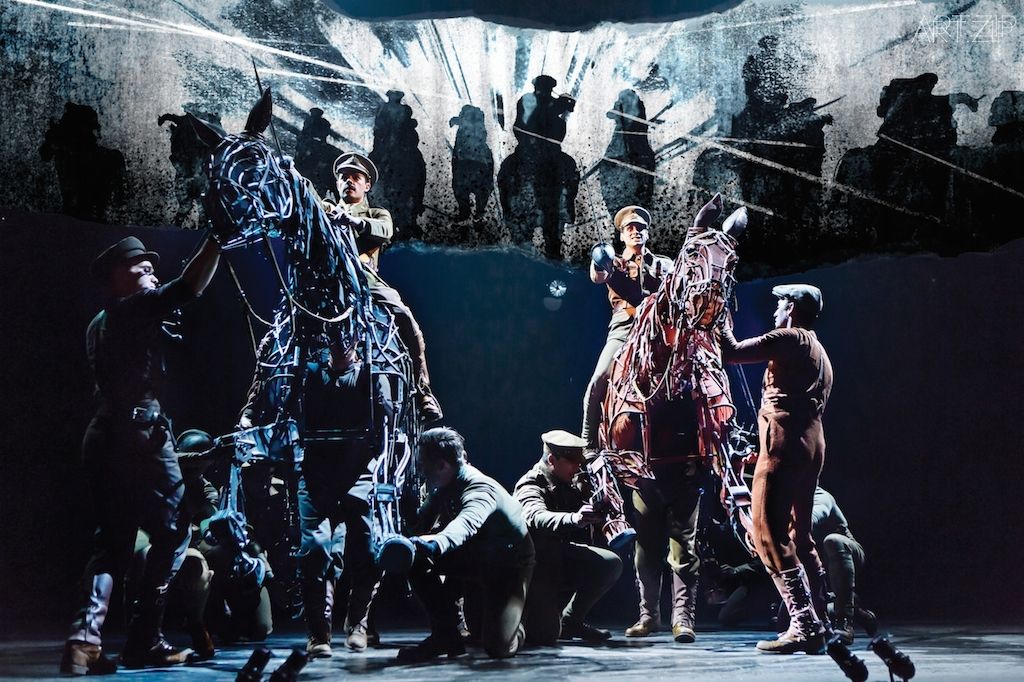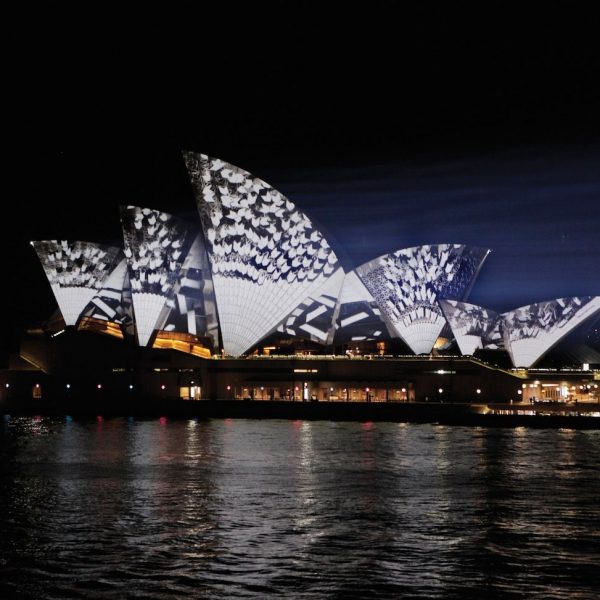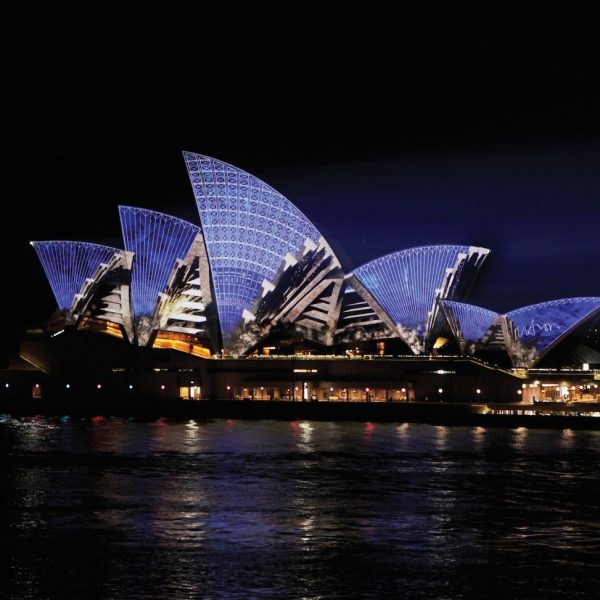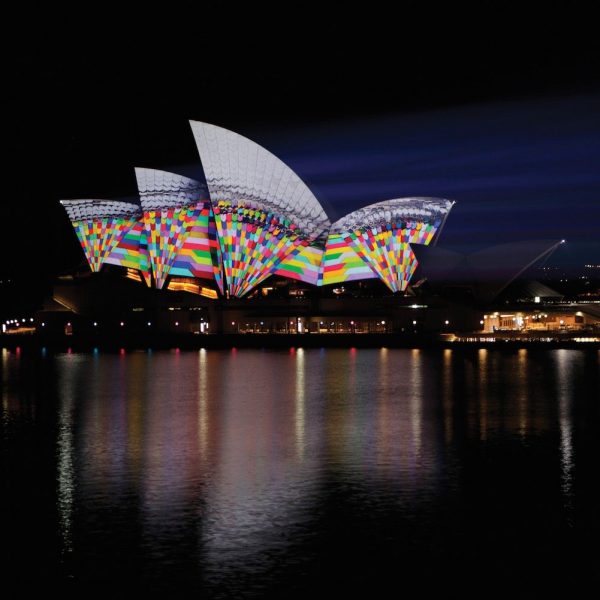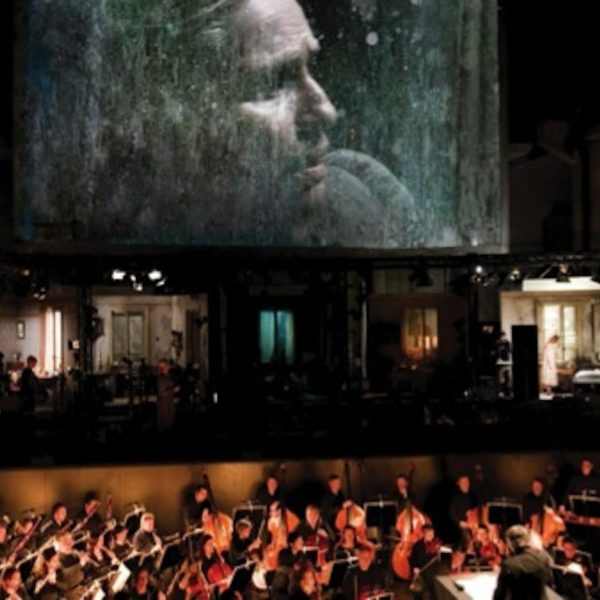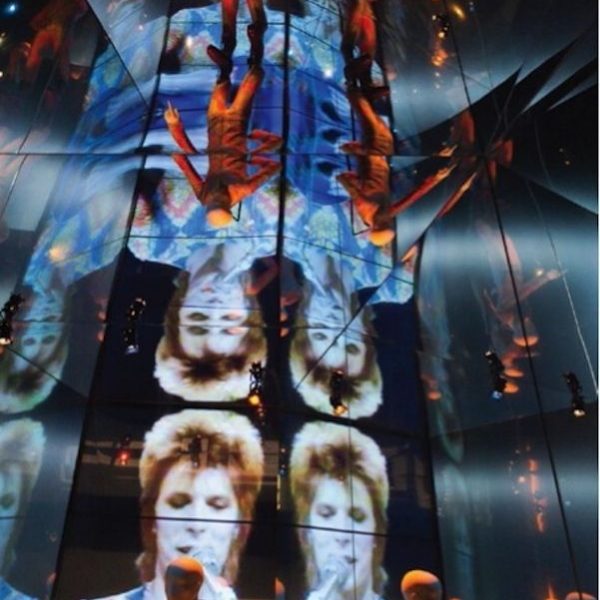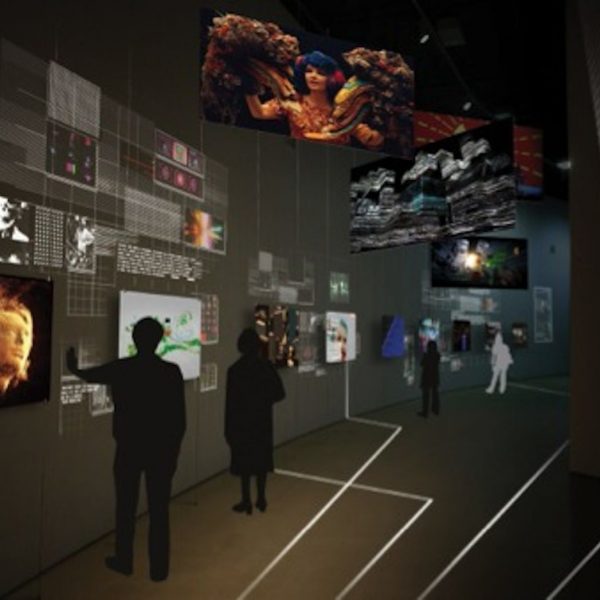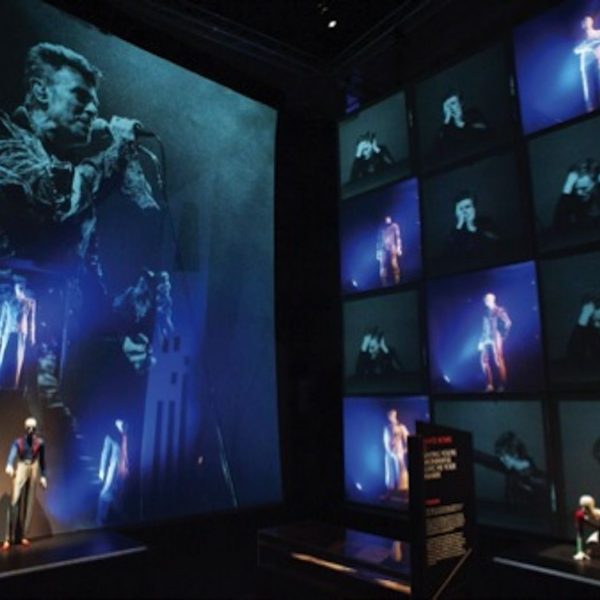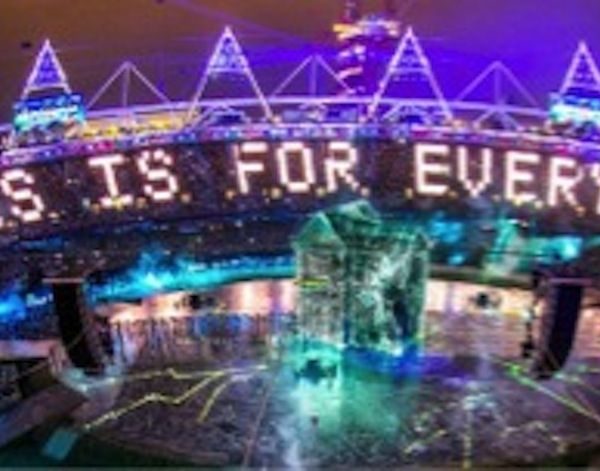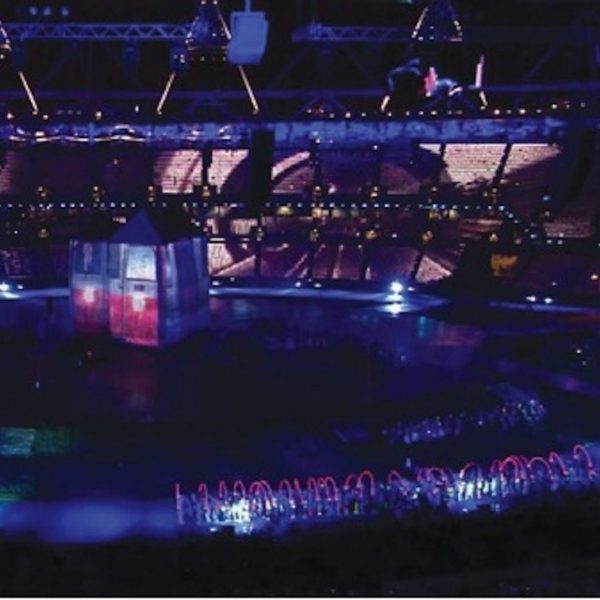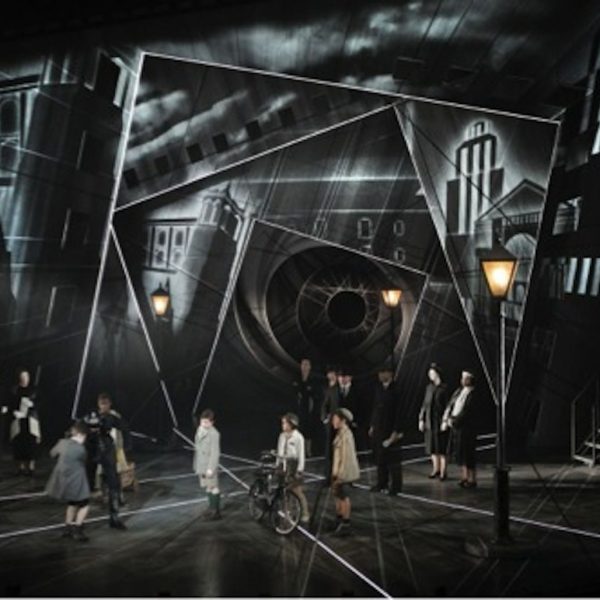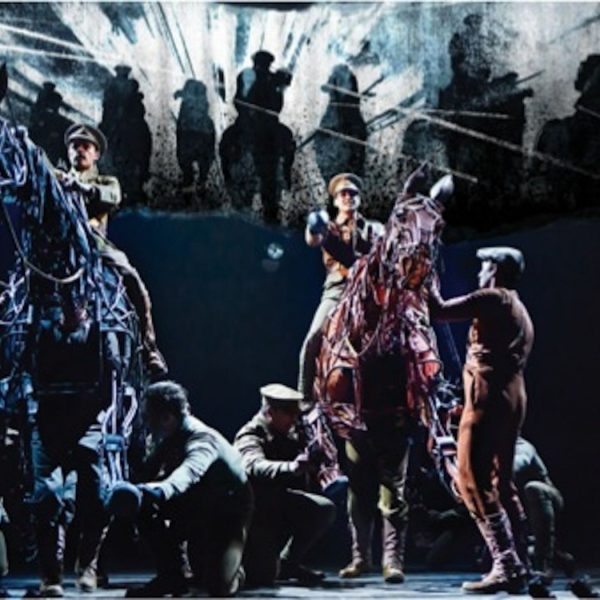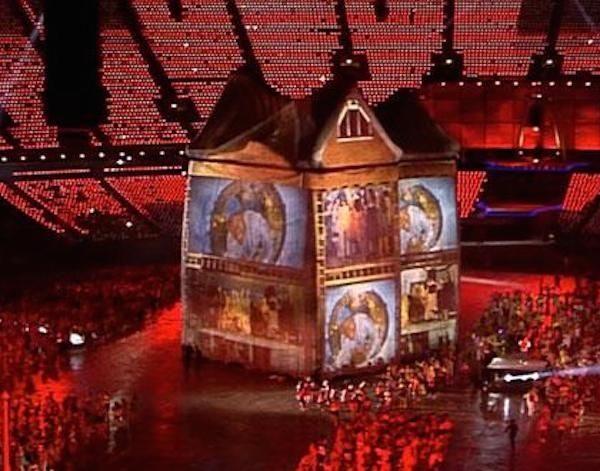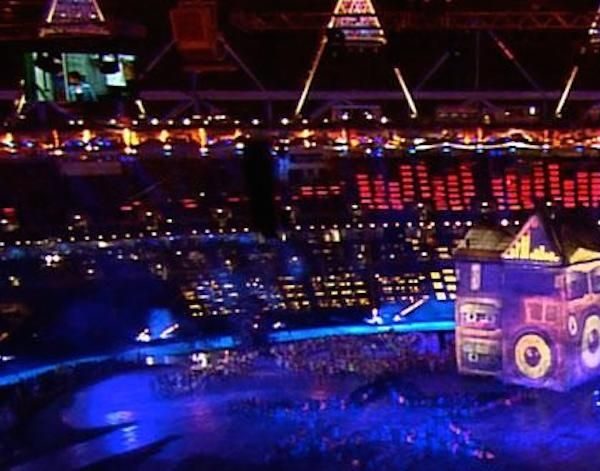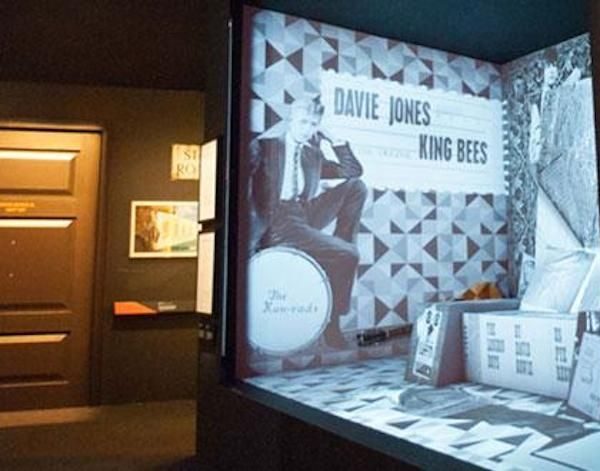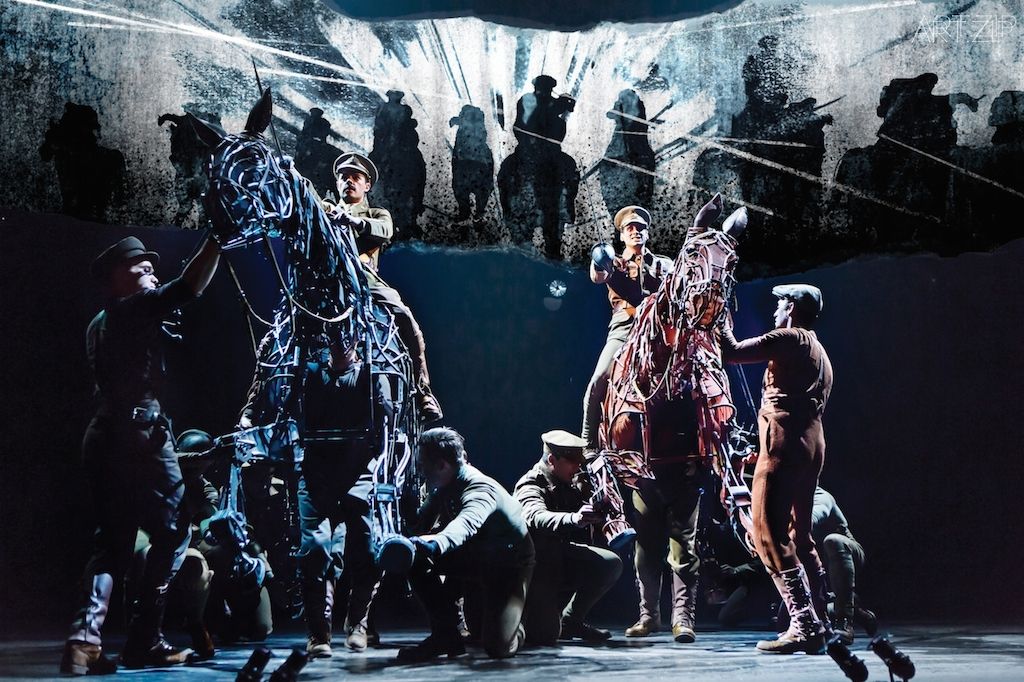
Interviewed by: Joanna Dong / 採訪:董一燃
Text by: Struan Robinson / 撰文:Struan Robinson
Translated by: Peng Zuqiang / 翻譯:彭祖強
59Production is a pioneer design company in contemporary global context, their project such as London 2012 Olympic opening ceremony shown their talent to everyone on this planet. Whether creating stage productions, museum installations, live music shows, large scale events, or films, 59’s team generates creative and technical ideas to help realise ambitious artistic projects. 59’s creative team covers a range of disciplines, including animation, filmmaking, writing, set, sound and lighting design. These diverse skills are combined with technical expertise and bespoke design to create exciting and innovative work for audiences of all kinds.
59製作公司是英國乃至全世界首屈一指的視覺設計公司,他們主持設計的2012倫敦奧運會開幕式取得了巨大的成功,并向全世界展示了他們的才華。不管是舞臺設計、博物館陳列、現場演唱會、大型活動、還是電影製作,59製作公司的團隊都能通過他們的創意和技術方案來幫助打造和實現完美的藝術表現。他們的團隊包含了各式各樣的優秀人才,動畫、電影、寫作、搭建、音響和燈光設計,不一而足。多元化的團隊和技能組合讓他們擁有了無與倫比的創造可能性,他們的作品充滿創造力,為不同類型的觀眾獻上充滿創意的令人眼前一亮的作品。
- David Bowie is – V&A Exhibition 2013
- WarHorse 59 productions
- Olympic Opening Ceremony 59 Productions
- Jonsi Go Live
- Fink Hard Believer World Tour 59 Productions
- Emil and the Detectives 59 Productions
ART.ZIP: Which production do you think is the starting point that gave you this idea to put in technology into theatre?
LW: The idea was never particularly to use technology. I mean technology is secondary to what we do; it’s the tool that we use. I think we’re more interested in finding unique ways to tell stories, and the most appropriate way to tell a story. If that involves the use of technology, then it’s great. But actually increasingly our work uses a lot of different approaches and some of its very analogue and very non-digital and specifically avoids the use of video where possible. So it’s just about finding the most appropriate tools to the narrative and to the project. The first project we ever worked on was a totally unique piece called Sweet Fanny Adams in the Eden, which was in an outdoor space in a garden in Scotland, and that was groundbreaking in any number of ways, because it was multi-locational and simultaneous. The audience could physically move around the place and its seven acres, this huge space. It’s like very small sort of performances happening all over the place. We were able to link up some of those places with video. It was daylight and we were using projection. On paper it was just a ridiculous idea. Everything about the project was ridiculous – that kind of set the bar for everything we were going to do afterwards. Almost everything we do has an enormous level of complexity to it – whether it’s conceptional, technical or aesthetic. I don’t know why that is, I think we just attract complicated ideas whenever we generate. We came to that really just as content providers originally and we were asked to make this content which we then delivered and the theatre company said: ‘How do we make this work onstage?’ and we said: ‘Well, we don’t really know actually, we’ll find out’. And we built our own systems to deliver it and that happened to be one of those shows a lot of people saw. That led on to things like Black Watch when the National Theatre was properly established. We did a lot very, very early and in a way that was the most complicated thing we did for several years; we extrapolated some of the ideas out of that. So many of our projects have got a unique element to them, every time we come across a new idea or a new demand, it feels like we have invented something for the first time; it’s almost every show we do.
ART.ZIP: 可不可以告訴我們,是從什麼時候你們開始將科技帶入到劇場創作之中來的呢?
LW: 其實重要的並不在於科技本身,它對我們而言永遠是次要的,只不過是個工具而已。在我看來,我們對用獨特和適當的方式去講故事更感興趣。如果這其中又有著對科技的需求,那就是再好不過了。但實際上,我們的作品中使用著大量不同的手段,其中有一些甚至是比較傳統或是非數字化的,有時候我們還刻意回避使用視頻技術。所以,說到底還是為劇目找到最合適的敘事工具。我們的第一個創作是一個名為《伊甸園裡的甜美的范尼·亞當斯(Sweet Fanny Adams in the Eden)》的作品,作品在蘇格蘭一個花園中的戶外空間上演。這個作品本身是極富有開創性的,它有著多個演出地點並具有即興表演的成分在。觀眾們可以自由地在那片7英畝大的場地中走動,而四處都有小型表演在進行。我們用視頻將這些地方連接起來,在白天的情況下使用投影,這要是寫在策劃案上肯定像個荒唐的主意!但那個項目的確有很多平常看上去很荒謬的地方,這就為我們日後的創作定下了基調。我們的所有項目都有著極高的復雜性,這包括概念上的、技術上的、還有美學上的復雜性。我很難告訴你為什麼會是這樣,或許我們的創作總是會招來這些高難度的點子。我們最開始僅僅是以內容供應方加入了那個劇目,我們的工作就是創作並展示出要求的內容,當劇團問起我們:”這要怎麼在舞臺上實現啊?”的時候,我們只好回答:”我們也不知道,但我們會找到答案的!”於是我們建立了自己的體系,並完成了最終的呈現,而那場演出恰好又吸引了不少觀眾。在那之後,我們參與了《黑盾(Black Watch)》的創作,那是在國家劇院立成後。我們很早開始就做足了功課,而那也是幾年之內我們所做過的最復雜的項目。從那之中,我們也獲得了不少點子和經驗。我們的每個項目都有其獨特的部分,每一次我們有了一個新點子,或是遇到一個新的需求,在我們看來都像是在創作出了一個新東西,我們的每一場演出都是這樣。
ART.ZIP: We are very curious about the process: how you work with the same productions, because sometimes it’s not the traditional process.
LW: There isn’t a standard process at all. Sometimes we produce our own work, sometimes we direct, sometimes we write. I think traditionally as in between about 2004 – 2009, we fitted into a fairly standard theatrical production model, where you have a director, a set designer, a lighting designer, and a video designer, and we filled that role. And increasingly we’ve moved into doing different configurations of that, so quite often we’ll do the lightening design, the set design and the projection design, or direct, or just consult, or just have an idea. So, it really is dependent upon on the project and actually because our work has moved away from solely theatre; theatre is kind of where our heart is in a way, because it’s about stories, but we’ve increasingly worked in museums and galleries. So, other non-linear narrative environments where you’re telling a story, but it’s much more spacial, more experiential. The way we formulate those projects is completely different to how we do it in theatre. So the theatre model is very simple and very straight forward, and everyone understands it. It’s more or less replicable across the world. If you’re then designing an exhibition or a museum or an installation or making a film, you apply a totally different model and mostly those models are inspired by our theatrical working practice, but sometimes it’s just completely different.
ART.ZIP: 我們對你們的工作方式很感興趣,面對相同的劇目,你們是如何工作的?因為很多時候傳統的工作方式並不可靠。
LW: 其實沒有所謂的範式。有時候我們自己創作,但同時我們也會去作導演或是編劇。可能在2004年到2009年之間,我們仍沿襲一個常規的劇團制作模式,其中有著對導演、舞臺設計、燈光設計和視頻設計的分工,而我們就是負責設計這部份的工作。但我們已漸漸地開始從事其他的一些職責,很多時候我們也會做燈光設計,舞臺設計和投影設計,有些時候會是導演,或者僅僅是顧問,甚至有時僅僅是提出幾個點子。所以實際上這也是和項目本身的需求息息相關的,我們的工作範圍已不僅局限於戲劇,戲劇只不過是我們的心之所向,但故事和敘事才是我們的核心,因此我們也開始與美術館和畫廊進行合作。所以我們也在邁入其它非線性敘事的環境,它們往往更具空間感和實驗性。而在這些環境中,我們的創作空間又和劇場中是完全不同的。劇場中的創作模式直接且簡單,在世界範圍內也大同小異。然而若是要設計一場展覽、博物館陳列、裝置,或者是創作一部電影,所需要的則是一個完全不同的創作模式,而這些工作方式也是受到我們戲劇經驗的影響,但有些時候,它又完全不是一回事。
ART.ZIP: We found that you have a lot of collaboration with Katie Mitchell, how did this long term working relationship start?
LW: It’s been very complicated. We did a production called Waves, which was an adaptation or an interpretation of Virginia Woolf’s novel The Waves. That was the first step if you like in this process of development which we are now calling ‘Live Cinema’, whereby we have live actors onstage who are filmed live in environments and stage setting; we build something that is approaching a feature film relayed live. And that relationship started with that production where I came in quite late to the process, because they needed someone to deliver this video, so, I started day one of rehearsals, never having met her, and we developed this process of working and it’s gone from stage to stage since then. It’s permeated and become more elaborate, more complex, more varied, also in terms of the source material and how we work together. We’ve tried various different formulations of how our collaboration works, and we’re trying a new one on a new project coming up next year, and that’s very interesting because we have a lot in common. We have very similar tastes both aesthetically, narratively and in terms of tone and emotion, which she finds very strange, because she’s kind of obsessed by the idea of despair and trauma, which are not things I’m inherently interested in. In terms of the work we do together, it gives a very interesting kind of character analysis to get inside – a very interesting sort of study. Because of the nature of the technique we use, we can get very close to characters and actors, and it’s about examining human form in forensic detail which I find very interesting. So, over time what’s happened is that I’ve got more and more involved in the dramatic and narrative and emotional side of things, and she’s got more and more involved in things she swore she would never care about, in terms of the mechanics of editing – by which I don’t mean the technology, I mean the sort of application of the filming process to her theatrical work. So, our interests and sort of input have started to mesh a little bit, but we have very good complimentary skill sets in which she’s second to none in terms of her ability to work with actors and to extract – in a very beautiful and gentle way – these kind of character studies from actors, and I’m very good at recording those. It’s been a very valuable, very worthwhile collaboration for us. As with all collaborations like that it’s gone through periods of great intense activity and then sort of backing off and trying something else.
ART.ZIP: 你們與凱蒂·米切爾(Katie Mitchell)有過很多合作經歷,這個長期合作關系是怎樣建立的呢?
LW: 這可說來話長了。我們當時正在創作一個名為《浪(Waves)》的劇目,大致由伍爾夫的小說《海浪》改編而來。那可以說得上是我們正在創作的”現場影院”的第一步實踐。其中,我們在現場拍攝了有演員的舞臺表演;我們創作了一部現場轉播的將近長片長度的電影。於是合作關系就是從那部片子中開始的。而我卻又是很晚才加入進來,正因為他們需要人手來完成這個視頻,所以我才在彩排第一天進組,之前從沒有見過她,我們就這樣在一部又一部的劇作中建立起了這樣的工作方式,它滲透到了我們的作品中,同時也在變得更加演繹、復雜和多樣化,這也和我們的素材以及合作方式有關。我們為此嘗試了許多不同的合作模式,在明年將要上演的一個新項目中我們會嘗試一個新的模式。我們品味相近,無論是美學上的、敘事性的,還是有關情感和語調上的。最開始她並沒意識到這一點,因為她對絕望和創傷的主題感興趣,而這些卻絲毫不是我所喜歡的。 而對於那些我們一同創作的作品,若是仔細分析,便可以發掘出其中的一些奧妙。 得益於我們工作手段的天性,我們可以和演員及其角色走得很近,於是我們工作的一部分便成為了對人物形態近乎偵查式的研究,我對此很感興趣。由此發展而來,我開始對戲劇性和敘事性的部分越發感興趣,而她也開始對她曾發誓毫無興趣的技術工作有了進一步了解,比如剪輯方式,我所說的不是剪輯的工具,而是如何把電影拍攝的模式引入到戲劇創作中。這樣一來,我們的興趣和投入開始慢慢的融合,但同時我們又取長補短,相得益彰。她有著數一數二的和演員溝通與互動的能力,優雅而溫柔,從演員中發掘出角色的潛力。而我又很擅長捕捉這些場景。對於我們來說,這一系列的合作都是十分珍貴的經驗。但就像所有的其他合作項目一樣,我們也經歷了艱苦的磨合期,也曾嘗試放棄或者另辟蹊徑。
ART.ZIP: Something interesting that I found in the research is that when you take something that is established touring, like War Horse for example, you make some new improvements to the production.
LW: Yeah, that’s true. I mean it’s very hard to let things go. Any theatre-maker or maker of art, if the capacity is there to make improvements, you want to do it. War Horse has been a fascinating journey because it’s been through so many iterations and actually it’s spanned quite a long period already, I mean it was 2007 when we first did it. The screen element which was the only real scenic element on the floor that has sustained ever since then, but almost all the content has been through various regenerative and redesign processes. So originally there was quite a lot of live shadow puppetry, and that was replaced by recorded shadow puppetry, and that was replaced by animation, and it’s got better and more sophisticated, but always we are trying to keep the core idea of it being hand drawn and being about pictures coming to life rather than imposition of video on top off an otherwise already tactile visceral production. So we’ve taken a lot of opportunities with that show to make and implement improvements as our skills have improved and the technology has improved. It’s always a battle.
ART.ZIP: 另外一個引起我註意的,是你們參與的知名劇目中,比如《戰馬(War Horse)》巡演的時候,你會給劇目帶來一些新的改變和提升。
LW: 沒錯,有時候機不可失。只要有條件,任何劇作家和藝術家都不會放過提升的機會。《戰馬》一路走來相當出彩,它已經多次上演,並跨越了很長的時間,我是在2007年加入了這個項目。其中的銀幕部分,是唯一一個從始至今保留下來的元素,所有的其他環節都經歷了多次重新制作和設計。最初曾有著很多的現場影子木偶,在那之後便被錄制好的影子木偶戲所替代,接下來又被動畫所替代,但它一直在不斷地朝更精致的方向演進,但從一開始我們就想將其保留成一個手繪的部分,它強調的應是圖像如何被賦予生命,而非將視頻投影在一個本來就相當有現場感和生命力的劇目上。所以在這出戲中,隨著我們自身技藝的進步,我們的確在劇目提升中做了很多嘗試。
ART.ZIP: War Horse will come to China next year and also Katie Mitchell’s Miss Julie is coming. So, during these two shows touring China will there be any change in your work to these pieces?
LW: Well, Miss Julie /Fraulein Julie – it’s very unlikely we’ll rework that because the nature of those projects means that they are a nightmare to rebalance because of the technical complexity of what the performers have to do onstage – if you change anything you have to re-rehearse it for weeks. So, unlike War Horse, where you can make a tweak to the content or update the animation or change the projectors or something, it’s just a technical improvement. With the work with Katie and the ‘Live Cinema’ medium, it’s all about human performance and control, so without having substantial periods of re-rehearsals, it’s very hard to make an alteration to tour. So, actually, weirdly with those shows which in a way should be more organic and more fluid, they have to be locked down, they have to be more rigid. So you probably won’t see a huge difference between Fraulein Julie as it was in 2010 to seeing in China in 2015.
ART.ZIP: Usually for the theatre you have an audience of several thousand, but for the Olympics opening ceremony you had much bigger audience. The people in the stadium who saw your video work could have had a very different experience of the people who saw it on TV. How did you deal with such a big project?
LW: That was an extraordinary thing to learn about as we were going. We’d never done something of that scale before. There was a very key moment when you realise you are not making it for the live audience. Our inclination as theatre-makers is to do for the people who are in the stadium, but of course all the broadcasters and producers and international Olympic committee are interested in is what’s seen on TV. It doesn’t matter that you’ve got 150 of the world’s most powerful people in the stadium, it’s 1.5 billion people that are going to be watching it on television, so we did make quite a lot of changes with that in mind and there are things even now that I would have done differently that we didn’t have time to change, like the use of the stadium mounted LED pixels, I’d have probably used a lot more had I realised at the beginning of the process what it was we were going to be doing. Less emphasis on subtlety and beauty, and more emphasis on drama and colour and action. Danny was a brilliant person to work with in that because he, like us, was only interested in the story and the narrative and the kind of core idea in all of it. He likes the spectacle and he’s very good at spectacle, but he’s not particularly interested in flashing things around. It had to be about what he wanted to say about Britain, and British culture and history, and so on. The brief on that front was pretty clear; it wasn’t about us showing off, it was about us servicing his vision. So the process was very different and aligning what we were doing to what the cameras were going to see was very different and we ended up producing quite a lot of forth-end broadcast content which we never commissioned to do or intended to do, so that people got some of that material on TV cut into full frame on the broadcast, which we had no expectation of doing whatsoever. But there were also really beautiful bits of work which no one except the people in the stadium got to see. You know things that took months, you know completely beautifully rendered helicopter shots of the stadium with this kind of light pulsing out – some fabulous stuff which is now lost forever.
ART.ZIP: 通常戲劇的觀眾至多數千人,但在奧林匹克開幕式中,你面對的是一個數量上大了不少的觀眾群。何況現場觀眾看到你的視頻時的體驗和電視機前的觀眾肯定是有所不同的。你是如何完成這樣一個大制作的?
LW: 我們當時也是邊學邊做,因為我們從沒有制作過規模如此之大的演出。當時我們也在某個時刻意識到了這出戲不只是為了現場觀眾。作為戲劇工作者,我們自然而然的首先就會考慮到體育場裡的觀眾,但實際上所有的轉播員和制作人,以及國際奧委會成員,都對電視上會出現什麼樣的視覺效果感興趣。這不是因為體育館中坐著150個國家首腦,而是電視機前有十五億觀眾在收看直播,所以我們為了直播做出了不少改變,現在看來,若是當時時間允許,我還會做出更多的改進,例如安置在體育場內的LED燈光,若是我能熟悉它們在現場的用處,或許我會用得更炫。還有對戲劇感、顏色和動作的強調,而不是一味的注重那些微妙的細節和美感。丹尼是一個非常好的合作夥伴,他和我們一樣,對故事和敘事以及融匯其中的主旨感興趣,他熱衷並擅長制造景觀,但這並不代表它喜歡四處設置發亮的東西。所有的安排都要和英國、英國文化、英國歷史等等有關。我們所接到的任務也是如此,不在乎如何去炫耀,而是如何去實現這樣一個願景。所以整個過程比較紛繁復雜,我們需要把我們所制作的,和攝像機鏡頭所能捕捉的一一對齊,我們最終制作了不少本來沒打算製作的內容。於是觀眾們也在電視上看到了這些內容,它們剪輯銜接到了直播中,我們之前對此也沒有計劃過。但其中也不乏一些優美的片段,現場的觀眾可能就無法看到了。這樣的制作耗時很長,包括那些極為精美的鳥瞰式鏡頭,配合著燈光效果,這些鏡頭現在已經完全不復蹤跡。
ART.ZIP: Are there any independent productions from yourselves?
LW: Yes, we are now involved with leading the production on a number of projects – actually interestingly on the smaller rock n’ roll projects where you’re dealing with bands that don’t necessarily have a production infrastructure of their own, so we’ve ended up producing them and also we’ve taken varying degrees of production responsibility with theatre projects as well, which has led us now to have the infrastructure to support our own self-initiated productions, and that is absolutely what we’re doing. That is actually the main focus of the next two years. One enormous project is a cross art piece which combines all of the different industries we work in into one, hopefully spectacular live production. And then we are working on other smaller self-initiated projects including some augmented reality stuff, some virtual reality stuff, some straight theatre production, some straight rock n’ roll production. And that’s very much where we see ourselves going as a company, not kind of going it alone but actually being more and more involved in the genesis of things, not just coming in to service somebody else’s creative ideas, but being part of that idea-making process. In a way that’s why we found it as a company that it’s taken us a while to get round to that. It’s funny looking back at early business plans. It’s always going to be about using commissioned work to finance our own commissions and finally after ten years that’s coming into a convergence, but it’s been quite a long journey.
ART.ZIP: 你有沒有一些獨立出品的劇作呢?
LW: 有的,我們現在正給幾個項目工作 ── 有幾個較小的搖滾樂項目,你需要和那些沒有自帶制作團隊的搖滾樂隊合作,所以我們便攬下了制作的活兒,與此同時,我們也在其他的一些劇團項目中,接下了不同程度的制作任務 ── 這些幫助我們自己建立起了一套制作機制,而這正是我們未來兩年的工作重點。其中一個大項目,是一個跨行業的藝術作品,它將我們參與的所有不同行業合並到一起,我們期待它成為一個精彩絕倫的現場表演。除此之外,我們還有一些其他較為小規模的獨立項目,包括虛擬視覺、視覺增強,和一些普通的戲劇和搖滾樂項目。而這正是我們公司的一個方向,不是單打獨鬥而是不斷地深入創作的本源,不僅僅是為他人的創意服務,而是成為創意發生的一部分。某種程度上而言,這正是公司成立的原因,而我們也是在一段時間後才走到了這一步,現在回頭看早期的商業計劃無疑使人會心一笑。一直以來我們都是依靠受雇工作來支持我們自己的創作,十年之後兩者終於有了一個平衡,但這一條路我們走了很久。
ART.ZIP: A lot of people have talked to us about the Arts Council cutting the funding, so people have limited resources to create new productions. Do you have this kind of concern about the funding?
LW: Well, that’s very difficult. We’re very lucky in that because we work all over the world and we have way more offers of work than we can handle. So there isn’t a risk of our ability to collaborate or experiment to run out at the moment, but who knows? If there’s another global crash, maybe that would cease to be the case, but we have the opportunity to work in very different ways in Australia or North America or Europe or the UK or even in China recently, or even the far east. From that point of view, there seems like there’s lots of very rich fodder to work with artistically, financially, and in terms of collaborators and so on. The UK Arts Council cuts are catastrophic across the board because it’s a long term problem: if you undercut the seeds funding in the arts, you simply reinforce the status quo, so you have people doing the same stuff they already know is successful again, and that’s a real risk of repetition, whether it’s artistic repetition or repetition of a production. A lot of our work isn’t necessarily expensive; it’s not inherently expensive because what we do is to apply a creative imagination to a problem, and sometimes the solution to that is 60 angel poised lamps on an aluminium structure, it’s not necessarily 20 enormous projectors around a stadium. There’s a degree to which austerity sort of fosters creativity – I wouldn’t want the Arts Council to jump on that particular band wagon! I think in so far as funding is a pre-requisite of experimentation, there’s a real worry there, but I’m not worried about our work, I’m more worried about the theatre, and performing arts and live arts world, but I am about any one genre of theatre and because we span so many different genres and different working practices, we are not under any direct threat as an artistic company. But it’s a very privileged position to be in and it’s partly because we spread ourselves so broadly, it’s partly because our work is in lots of different countries and industries, and we have lots of different processes. So we’re lucky.
ART.ZIP: 許多人都向我們抱怨過英國藝委會對項目資助資金的緊縮政策,這樣一來,大家有了更少的資源去創作新作品。你們有沒有這方面的顧慮?
LW: 幸運的是,我們的工作遍布全球,永遠有著做不完的工作。所以我們仍有著用不完的合作和實驗的機會。但世事難料,如果再來一次金融危機,那我們的工作可就不好說了。但現在來看,我們在澳大利亞、北美和歐洲甚至在中國,都有著很多不同的工作機會和工作方式。這樣來看,從藝術上、經濟上、或是合作者上、我們都有不少的工作機會。英國藝委的資助削減在業界確實是災難性的打擊,但它也反映出了一個長期問題:如果你砍掉了藝術領域中的種子基金,那只會讓藝術安於現狀,藝術家們只會不斷重復那些成功的項目,這種重復本身也是一種風險,無論是藝術上的還是制作上的。我們的許多作品並耗費不了多少錢,那也是因為我們所做的是把一種富有創意的想象嫁接到一個問題上。有時候解決問題的方式是給鋁制結構加上個60度角的臺燈,而不一定是用20個巨型投影照亮整個體育場。某種程度上而言,艱苦條件同時也在促進藝術發展,但我可不希望藝委以此為辦事宗旨!但在我看來,只要把資助看作是實驗的前提條件,就一定會出現問題。但我不對我自己的作品感到擔心,讓我擔心的是戲劇,以及整個表演藝術和現場藝術界。但我們不屬於任何一個戲劇門類之下,因為我們的作品跨越了不少風格和門類,我們公司並沒有受到任何直接的財政影響。 這樣一個狀態來之不易,但也是因為我們在許多不同的國家和產業中工作,我們有著多樣的工作方式,這一點上來看,我們是幸運的。
ART.ZIP: Do you have any advice to the Chinese theatre artists if they want to develop their work in a more individual way?
LW: I think just don’t get locked down into doing what people have done before. There’s a big risk in emulating existing successful things. I think it’s good to take inspiration from as many different media, genres and as many different cultures as possible. What is amazing about what’s happening in China at the moment is this appetite for absorbing new things from everyone. From an artistic point of view what you don’t want to do is narrow your focus whether you’re making theatre or art or whatever it is. The greatest artists say – which I don’t count us amongst by the way! – that it’s slightly irrelevant what medium they’re working in. If you look at someone like Anish Kapoor – genuine giants of art, they don’t limit themselves to one particular material or one particular surface, it’s about expressing an idea in a variety of different ways and their work will go through these kind of huge shifts between different materials and different spaces. But it’s all about seeking out a way of communicating an idea or environment or feeling. It’s not about “there’s this new technology, lets find a way of using”, although that can be great also, sometimes that can open up entirely new possibilities that turns on a light bulb – you can do something that you always assumed was impossible. But mostly it’s about having a story you want to tell.
ART.ZIP: 對於那些想要獨立創作的中國戲劇藝術家,你有什麼樣的建議呢?
LW: 不要重復別人所做過的東西。效仿現有的成功作品,本身也是一種風險。我覺得能從許多不同的媒介、風格和文化中提取靈感是相當可貴的。在中國,最難得的正是當下人們對新鮮事物和向他人學習的極大興趣。而從藝術角度上來看,最不應該做的,是自我約束和封閉,無論你是在創作戲劇還是藝術。最好的藝術家會說 ──盡管我們離這個目標還很遠──用什麼樣的媒介不是最重要的問題。如果你看看安尼施·卡普爾(Anish Kapoor)這樣的藝術家,他們都不會把自己局限在任何單一的材料或是表面上,最重要的是用多樣的方式來展現一個概念,而作品本身也會在不同的材料和空間中發生巨大轉變。說到底都是與尋求一種溝通想法、環境或是感覺的方式有關。而不是說一種”啊!我們有了這種新科技,趕快找個能使用它的方法。”,盡管那樣不失為一個策略,有時候它也能點亮一些新的可能,開拓出那些之前看作是不可能的機會。總而言之,你一定要有一個想要說的故事。

